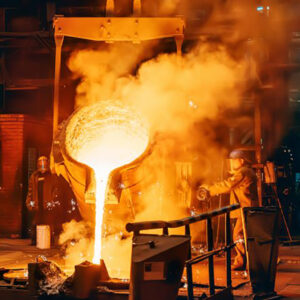In the fourth quarter of this year, prices for ferrous metals and scrap may rise in Asia, according to Argus Media.
This could be driven by economic incentives from Beijing, rising demand and disruptions in scrap supplies. The positive trend may be limited by softer demand in some countries in the region. At the same time, market conditions will be affected by a decrease in pressure from Chinese exports.
The Chinese domestic steel market has been on an upward trend since the end of September after the country’s central bank announced measures to support the real estate market. This led to a rebound in prices for marine steel products. Higher steel prices in China also improved margins for foreign producers, as pressure on the market from cheap steel products from that country eased.
In October, Beijing announced additional measures to stimulate the economy. According to market participants, this is likely to boost investor confidence and improve buying interest during the year-end restocking period by processors.
Vietnamese steelmakers expect the domestic steel market to strengthen in October-December. The previous three quarters were characterized by lower demand and increased competition from China, but prices began to recover in late September.
After Vietnam initiated an anti-dumping investigation into imports of hot-rolled coils from China and India, many buyers shifted to local products. The market expects HRC and construction steel prices to show positive dynamics in the fourth quarter as pressure from Chinese products eases.
In addition, demand for steel in the country is also expected to grow due to increased public investment. Amid the market recovery, Vietnamese buyers have become more active in the marine scrap market. Prices for this raw material may be supported by a possible reduction in supply, particularly from the US, which is a seasonal factor. There are also likely to be disruptions in the collection and transportation of scrap due to logistical problems associated with cold weather.
South Korea and Taiwan may not have enough momentum in October-December to sustain the growing optimism.
Taiwanese scrap buyers say that the price outlook is uncertain, in particular due to truck weight restrictions starting October 1, which could result in additional operating costs. However, demand for automotive steel in the country is still considered relatively high, and the fourth quarter is usually the peak season for the steel industry.
South Korea reduced steel production by 5.5% year-on-year – to 42.5 million tons in the first 8 months of this year. Low demand continues to weigh on the country’s steel industry.
As GMK Center reported earlier, WorldSteel has downgraded its short-term forecast for global steel demand in 2024. Volumes are expected to decline by 0.9% compared to 2023 to 1.75 billion tons. At the same time, global steel demand is expected to grow by 1.2% y/y in 2025 after three consecutive years of decline to 1.77 billion tons.




